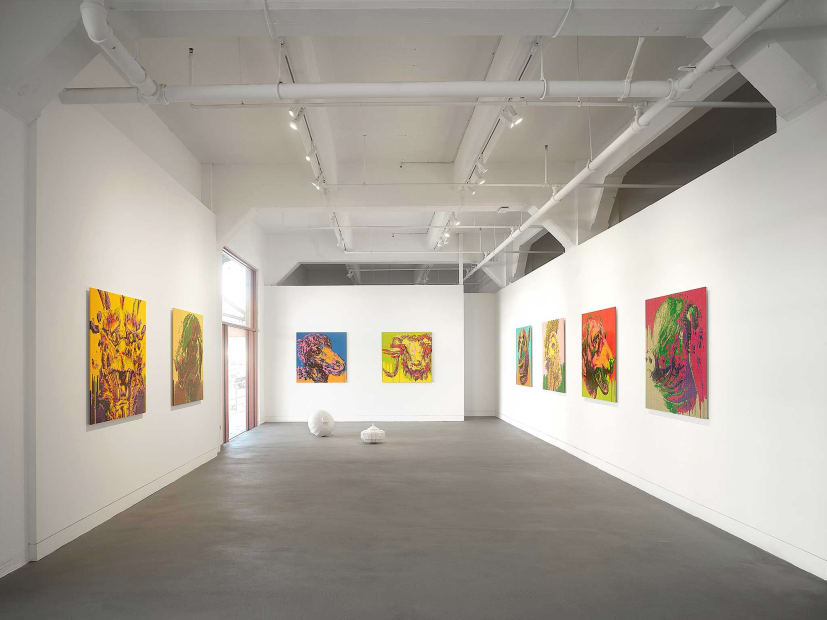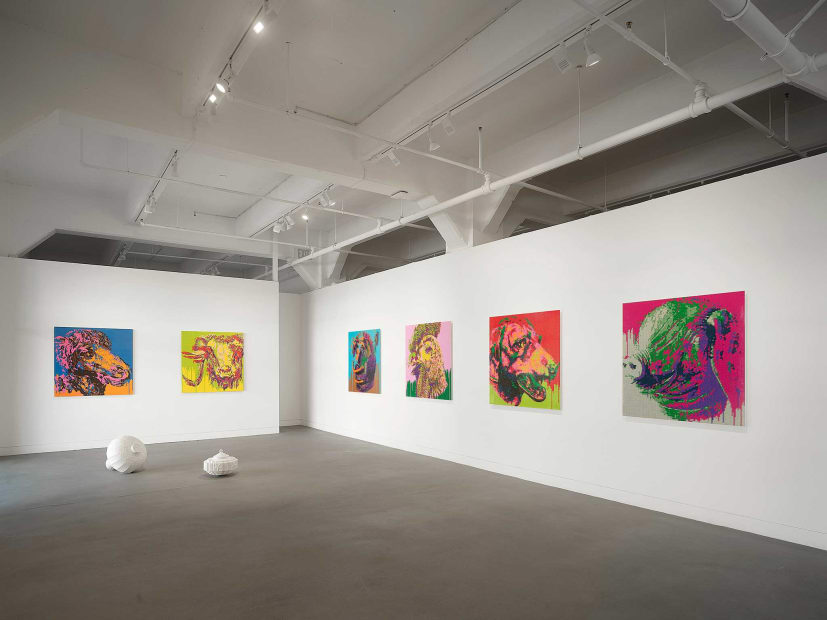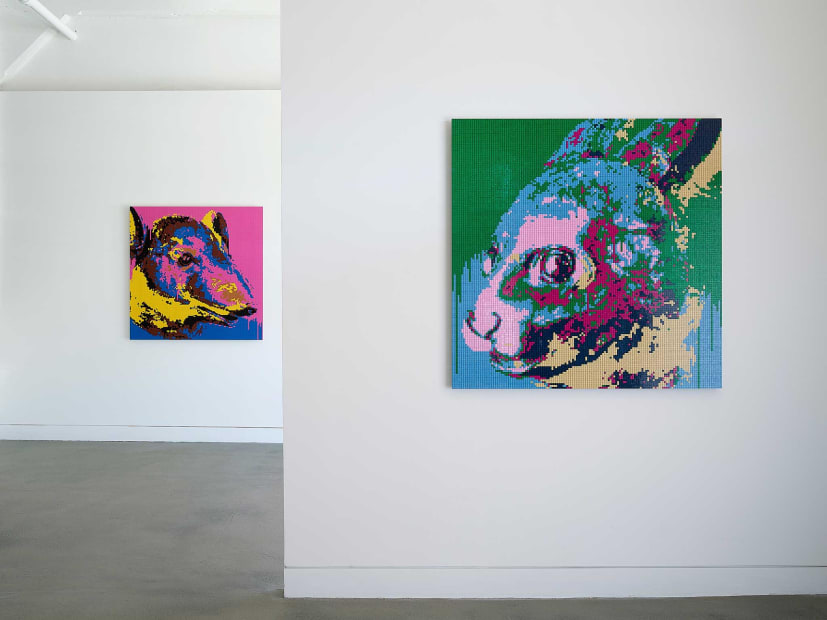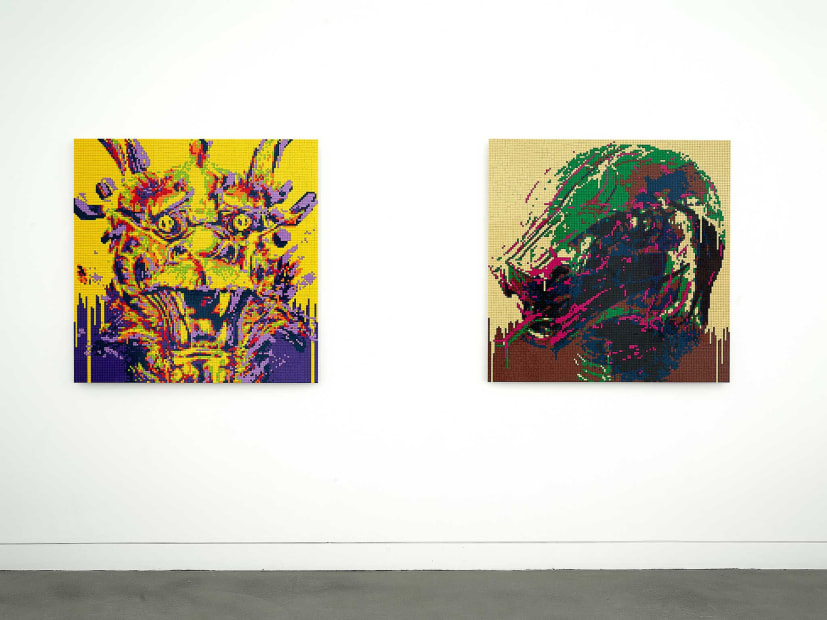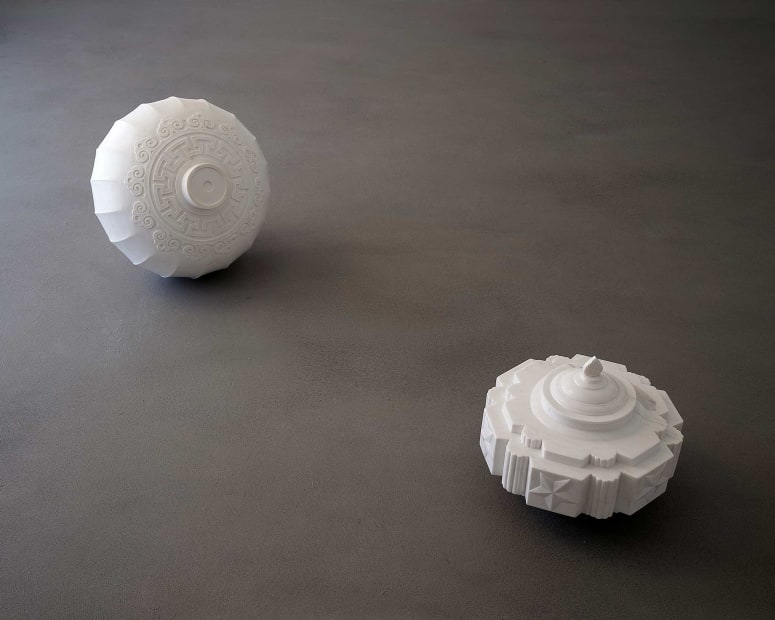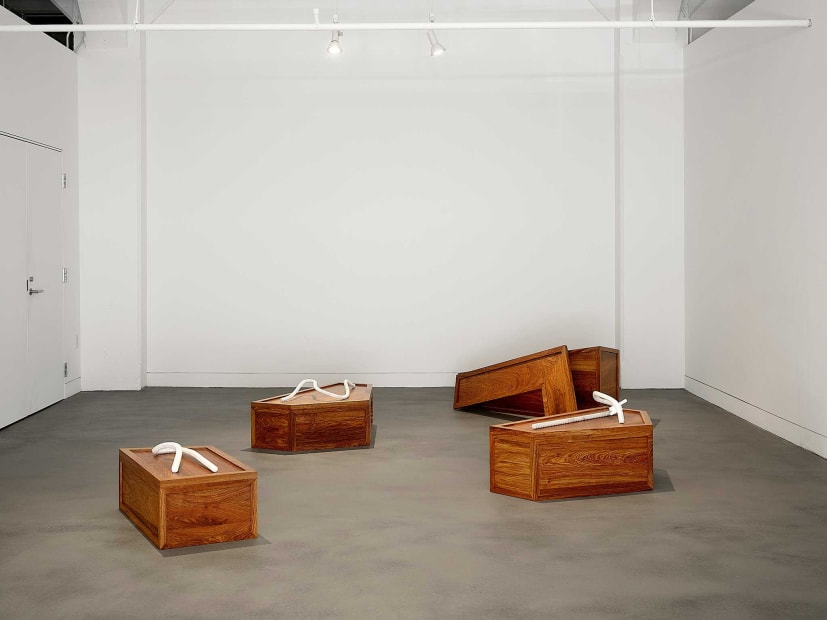Ai Weiwei: Everyday Monuments
Ai Weiwei (b. 1957, Beijing, China; lives and works in Portugal) is celebrated for his enduring and iconic artworks that address our shared urgencies. His sculptures and installations often reveal surprising sociopolitical dimensions, shedding light on people, places, and events that might otherwise be forgotten. Such generosity is the guiding principle of Ai Weiwei: Everyday Monuments, Ai’s solo exhibition at Haines Gallery opening June 2022.
Designed specifically for Haines’ new Fort Mason gallery, Everyday Monuments comprises 18 works in materials such as LEGO, marble, and wood, each a synthesis of complex historical, cultural, and political references. The exhibition is Ai’s first solo show in the Bay Area since 2016.
The exhibition marks the San Francisco debut of Ai’s Zodiac (2018), a series of twelve panels depicting the mythical animals of the traditional Chinese Zodiac, a system ascribing personality traits based on one’s year of birth. Created from thousands of brightly hued LEGO bricks, they appear in the gallery in astrological order. This body of work is rooted in the twelve monumental bronze animal heads that once comprised an epic water clock known as the Zodiac Fountain in Yuanmingyuan, Beijing’s Old Summer Palace. The original heads were looted by Anglo-French troops who took part in the destruction of Yuanmingyuan in 1860 during the Second Opium War. Occasionally resurfacing for sale — most famously, at Christies’ 2009 auction of the Yves Saint Laurent and Pierre Bergé Collection — only seven Zodiac heads were ultimately recovered.
Previously recreated by Ai in bronze, for Everyday Monuments the Zodiac heads return in LEGO bricks. In Ai’s hands, these humble toys—loved by both children and adults—are elevated in the service of a greater artistic project with layered implications. With their rich, contrasting colors and square shape, these works evoke Warhol’s celebrity portraits, while simultaneously referring to Ai’s first use of LEGO bricks for Trace, the enormous installation depicting political prisoners that was integral to the FOR-SITE Foundation’s 2014 exhibition @Large: Ai Weiwei on Alcatraz. Presented here in a more contemporary iteration, the Zodiac heads remain a potent trigger for conversations about nationalist sentiment, provenance, authenticity, and cultural exchange.
While the LEGO Zodiac works reproduce historic monuments with everyday materials, additional works in the exhibition cast everyday objects in marble, a stone associated with permanence and public memory. Four such marble sculptures on view in the exhibition exemplify the fusion of art and activism that characterizes Ai’s best works. The artist’s Rebar (2014) series emerged from the aftermath of a massive earthquake that struck Sichuan Province on May 12, 2008, killing nearly 90,000 people. Among them were thousands of school children, whose deaths were caused, in part, by faulty school construction. Public outcry was met with swift retribution from Chinese authorities, leaving bereaved parents unable to raise questions or get answers. This tragedy, and the government’s subsequent act of erasure, galvanized Ai, who mobilized an investigation into the coverup. His work with other activists ultimately yielded the names and other vital details of 5,197 schoolchildren who had perished in the quake and “disappeared” from public record. At Haines, each twisted rod of carefully carved marble rests atop a wooden platform resembling a small coffin, transforming the wreckage of poorly built schools into an affecting memorial for those who died as a result.
Persecuted for his ongoing efforts to shed light on such corruption and human rights abuses, Ai was brutally beaten by police and ultimately disappeared—taken into extrajudicial custody by the Chinese authorities for 81 days, leaving the world and his loved ones to wonder about his whereabouts and safety. Following massive public outcry for Ai’s release, in the summer of 2011 the artist found himself free from imprisonment, but stripped of his passport and the subject of constant surveillance. The Lantern (2014) is a testament to Ai’s mocking response to the video cameras that once surrounded his Beijing studio, which he defiantly festooned with red paper lanterns, traditionally associated with festivals. The exquisitely carved form appears to blow in the wind despite its marble girth, as if free from the oppression of gravity. Nearby, the Ceiling Lamp with Stars (2014) represents a light fixture common in Communist China during the 1950s and 60s. Adorned with five-pointed stars, the marble sculpture is a symbol of the Communist Party, and speaks to an era of Soviet-inspired modernity — a bygone utopia whose legacy is still strongly felt today.
Throughout the exhibition, a surprising play of materials and forms, the monumental and the mundane, invites audiences to question authority and the construction of our shared histories. Talking about the role of the individual in relation to those in power, Ai explains: “I call on people to be ‘obsessed citizens,’ forever questioning and asking for accountability. That’s the only chance we have today of a healthy and happy life.”


